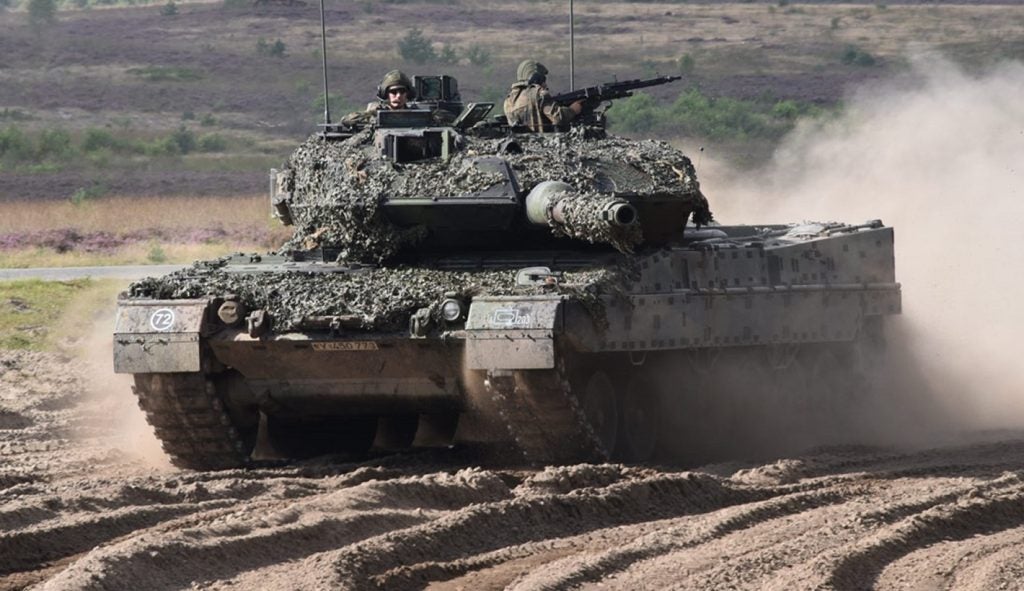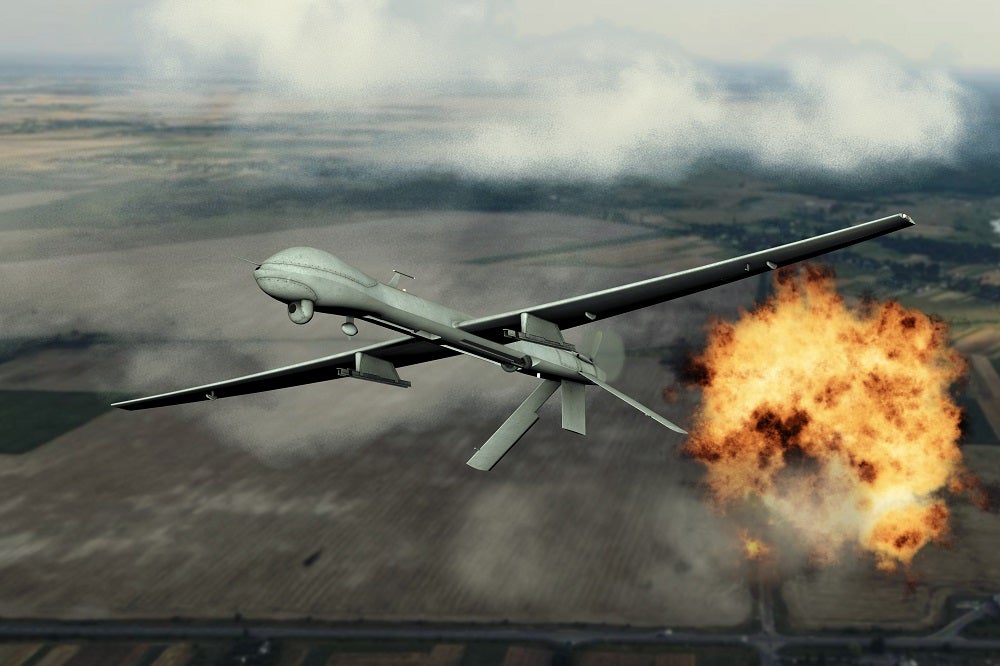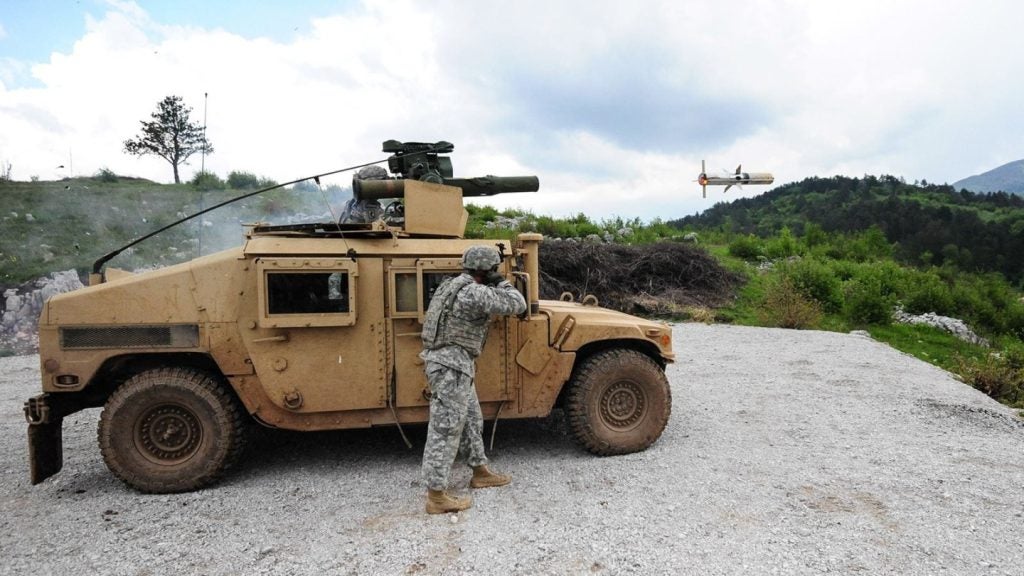Army Technology lists five of the most popular tweets on military and security in February 2022 based on data from GlobalData’s Aerospace, Defense & Security (ADS) Influencer Platform.
The top tweets are based on total engagements (likes and retweets) received on tweets from more than 150 military and security experts tracked by GlobalData’s ADS Influencer platform in February 2022.
How well do you really know your competitors?
Access the most comprehensive Company Profiles on the market, powered by GlobalData. Save hours of research. Gain competitive edge.

Thank you!
Your download email will arrive shortly
Not ready to buy yet? Download a free sample
We are confident about the unique quality of our Company Profiles. However, we want you to make the most beneficial decision for your business, so we offer a free sample that you can download by submitting the below form
By GlobalDataThe most popular on military and security in February 2022: Top five
1. Lawrence Freedman’s tweet on how the Russia-Ukraine crisis could end
Lawrence Freedman, an Emeritus professor of war studies at King’s College London, shared his article on how the Russia-Ukraine crisis may end. Freedman stated that it is widely accepted that the war will end either with military force, a diplomatic breakthrough or with the retreat of Russian troops. He explained in his article that the Russian President Vladimir Putin is facing a binary choice to address his issues either through military or diplomatic means.
Freedman added that Putin is faced with the uncertainty around a good military action or diplomatic outcome. As a result, the Russian leader could choose a third option, that is to let the crisis linger for a while until it eventually fades away. Freedman speculates that if Putin breaks off all diplomatic relations right now, it will be the clearest sign of a war ensuing. Putin, however, is continuously exploring various possibilities with global leaders including the US President Joe Biden and the French President Emmanuel Macron, which indicates a mixed approach until he retreats with his troops from Ukraine and the crisis eventually fades away, Freedman added.
Username: Lawrence Freedman
See Also:
Twitter handle: @LawDavF
Likes: 215
Retweets: 94
2. Shashank Joshi’s tweet on Russia’s nine full-scale invasion routes into Ukraine
Shashank Joshi, a defence editor at publishing firm The Economist, shared an article on a US military and intelligence assessment suggesting how the Russian military could invade Ukraine in a full-scale invasion through nine different routes. The article detailed that about 100 of the Russian military’s 168 battalion-tactical units comprising 800 to 900 troops were deployed. The assessment further revealed that Putin dispatched some of the equipment and personnel from six of the seven special operations units named Spetsnaz, with each unit consisting of 250 to 300 best fighters.
The US government assessment highlighted that two of the invasion scenarios could include a simultaneous attack from several sides, which is also called as the pincer movement or double envelopment military manoeuvre. Furthermore, one of the approaches indicated that the Russian military could capture most of Ukraine east of the Dnipro River, including nearly half of the Ukrainian armed forces comprising the most capable units and artillery, the article detailed.
Username: Shashank Joshi
Twitter handle: @shashj
Likes: 101
Retweets: 74
3. Kristina Wong’s tweet on the deployment of National Guard personnel ahead of a trucker convoy to Washington, D.C
Kristina Wong, defense writer at online media the Breitbart News Network, shared an article on Pentagon approving the deployment of 700 personnel from the National Guard ahead of a trucker convoy to Washington, D.C., US, which was organised to protest against the vaccine mandate. The National Guard personnel were deployed for traffic control support, following request from the D.C. Metropolitan Police Department and the U.S. Capitol Police (USCP) amid the protests.
Around 400 National Guard members were deployed to provide assistance to the D.C. Homeland Security and Emergency Management Agency (HSEMA) at selected traffic posts, offer command and control, and cover sustainment needs. Furthermore, 300 National Guardsmen were assigned to support at designated traffic posts and selected Capitol entry points.
Username: Kristina Wong
Twitter handle: @kristina_wong
Likes: 53
Retweets: 43
4. Andrew deGrandpre’s tweet on the formation of Combined Joint Task Force Dragon in Wiesbaden, Germany
Andrew deGrandpre, deputy national security editor at The Washington Post, shared an article on the formation of the Combined Joint Task Force Dragon in Wiesbaden, Germany by the XVIII Airborne Corps of the US Army within 24 hours of receiving notification. Captain Matt Visser, the XVIII Airborne Corps’ spokesman, stated that the fast mobilisation and arrival of the corps highlights their capacity to deploy on short notice.
The XVIII Airborne Corps includes combat capable forces that are on standby to deal with the Russian aggression against Ukraine. The XVIII Airborne Corps along with the 82nd Airborne Division work with their European allies and partners to enable rapid and efficient operations in the European region. A total of 300 US service troops have been deployed to Europe to supplement the current US military presence, the article noted.
Username: Andrew deGrandpré
Twitter handle: @adegrandpre
Likes: 37
Retweets: 21
5. Ulrike Franke’s tweet on the Europeans’ perception of the Ukraine crisis
Ulrike Franke, senior policy fellow at the European Council on Foreign Relations (ECRF), an international think-tank, shared an article on Europeans’ opinion about the Russia-Ukraine war. A poll conducted by ECRF revealed that the majority of Europeans predict that Russia will attack Ukraine in 2022. The survey included respondents from Finland, France, Germany, Italy, Poland, Romania, and Sweden, who account for more than two-thirds of the European Union’s population.
The poll found that 73% of the respondents in Poland, 64% in Romania, 55% in Sweden, 52% in Germany, 51% in France and Italy, and 44% in Finland believe that an invasion is imminent. Furthermore, the respondents agreed that Ukraine should be defended against invasion by Russia, with majority stating that NATO is best positioned to defend Ukraine. The respondents also agreed that accepting refugees from Ukraine, higher energy prices, cyberattacks, economic downturn and the threat of military action from Russia were some of the consequences that were worth the risk in defending Ukraine.
Username: Ulrike Franke
Twitter handle: @RikeFranke
Likes: 35
Retweets: 6








